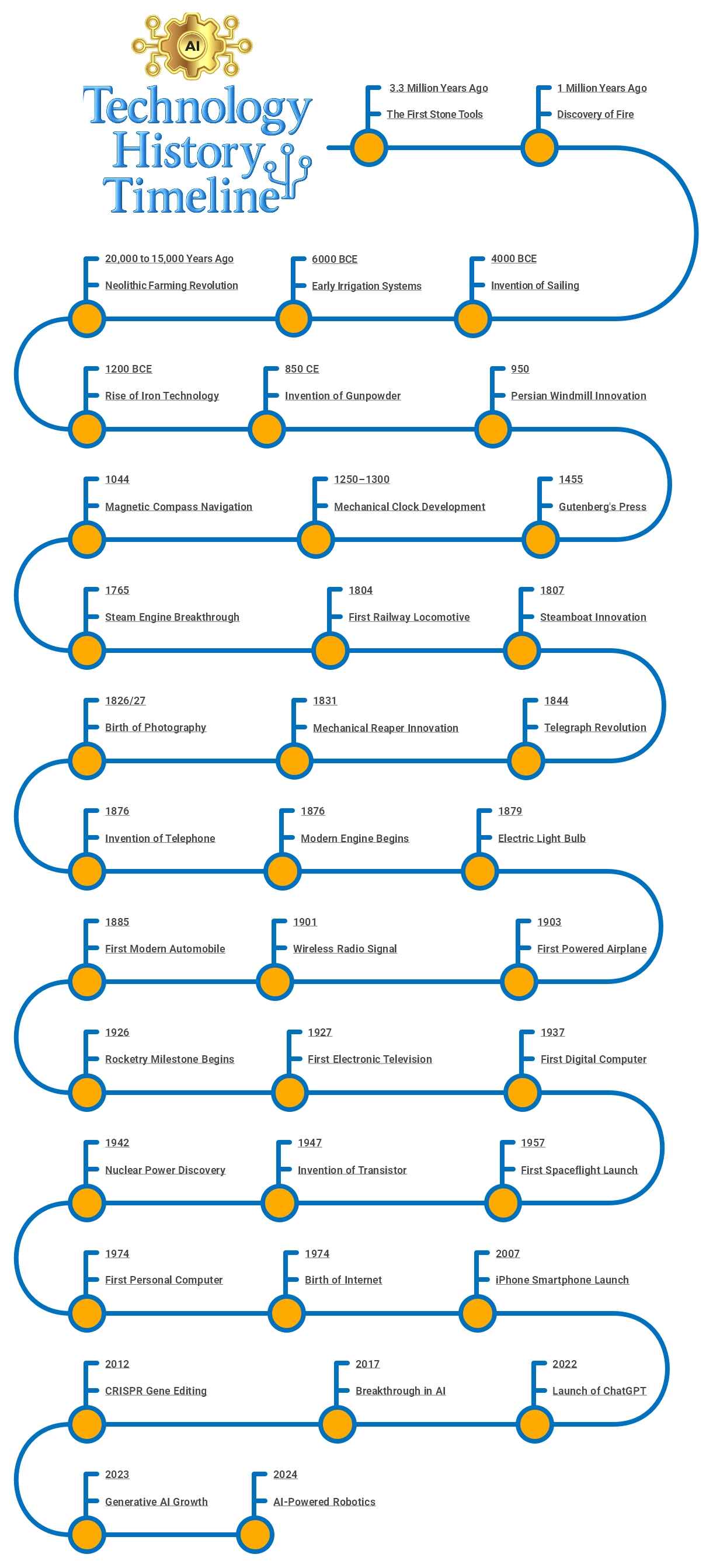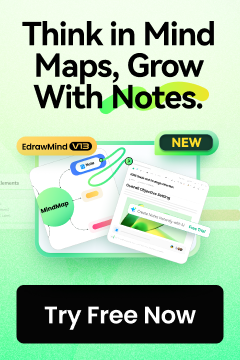From stone tools to AI, technology has shaped human life for millions of years. Every invention started with a simple need. Today, we explore the biggest breakthroughs in history and how they changed the world.
Want to visualize this journey? With EdrawMind, you can easily create your own technology timeline. Just pick a template, add key events, and customize it in minutes. Whether for school, work, or curiosity, EdrawMind helps turn ideas into clear, engaging timelines.
Let’s dive into the past and see how you can map the future!
In this article
Part 1: Technological Timeline
As we all know, "Necessity is the mother of invention." When people needed warmth, they discovered fire. When they needed food, they started farming. Every challenge pushes humans to think, build, and adapt. Technology didn't begin in high-tech labs; it began with everyday needs. Simple tools made life easier and changed how people lived.
This technological timeline shows how those small steps became big advancements. From stones to spaceships, each invention shaped the world we know today. It's a story of human creativity, survival, and progress.
3.3 million Years Ago: The First Tools
The history of technology began around 3.3 million years ago! Our ancestors, probably something like Australopithecus, weren't just wandering around; they were using tools. At Lake Turkana in Kenya, scientists found sharp stone flakes used as knives and big stones used like hammers and anvils.
That means technology didn't begin with Homo sapiens. It started way before. These early tools marked the beginning of humans shaping the world with their hands.
1 million years ago: Discovery of Fire
Fire changed everything. But we don't know exactly when humans first started using it. Long before modern humans, Homo erectus was already using fire. Scientists found ash and burnt remains in caves dating back over a million years!
Fire gave warmth, protection, and a way to cook food. It was like humanity's first superpower.
20,000 to 15,000 Years Ago: Neolithic Farming Revolution
During this time, life changed completely. Humans stopped hunting and gathering and began farming. That meant they could settle down, build homes, and grow communities.
It wasn't just farming; pottery, weaving clothes, and maybe even the wheel appeared. People now control nature instead of just surviving it. This was the start of civilization.
6000 BCE: Early Irrigation System
Around 6000 BCE, people figured out how to bring water to their crops. This happened in Mesopotamia and Egypt, where rivers like the Tigris and Nile made it possible.
Irrigation wasn't easy. It took planning, digging canals, and teamwork. So, if they could manage water, they could manage cities too. It was a big step toward organized societies.
4000 BCE: Invention of Sailing
The first sailboats didn't cruise oceans - they floated down the Nile. These early boats used wind power but also had oars for steering through the narrow river.
This was the beginning of sailing technology. It meant people could trade more, travel farther, and explore their world. The river became a road.
1200 BCE: Rise of Iron Technology
Iron changed the game. Around 1200 BCE, iron started replacing bronze because it was stronger and easier to find.
Bronze needed both copper and tin, which weren't everywhere. But iron was common. Now, more people had metal tools and weapons. This opened the door for big changes in farming and warfare.
850 CE: Invention of Gunpowder
In China, alchemists searching for a life-extending potion stumbled onto something explosive - literally. That was gunpowder.
At first, it was used to shoot rockets from arrows. Eventually, it reached Europe in the 1200s. The world would never fight the same way again.
950: Persian Windmill Innovation
About 5,000 years after sailboats, humans figured out how to make the wind do more work. The first windmills appeared in Persia.
These early machines had blades spinning on a vertical shaft. Later, Europe had windmills with horizontal blades. Whether they invented them separately or not, it was a smart way to grind grain without sweat.
1044: Magnetic Compass Navigation
The compass helped people find their way, even without stars. A Chinese book from 1044 talks about using a floating magnetized fish to navigate.
It was a simple idea; iron pointing north in a bowl of water, but it was huge. Explorers could now travel farther and come back home. The world was opening up.
1250–1300: Mechanical Clock Development
Before this, people used water clocks or hourglasses. But in Europe, by the late 1200s, mechanical clocks began ticking.
They were installed in cathedrals to tell time for prayers. Finally, time was something you could measure exactly. Life got more organized.
1455: Printing
In 1455, Johannes Gutenberg printed the Bible with movable type. This was the first big use of the printing press in the West.
Books could now be copied fast and in large numbers. That meant more people could read, learn, and share ideas. It was an information explosion.
1765: Steam Engine Breakthrough
James Watt improved an old steam engine by adding a condenser. That made it way more efficient.
It sounds technical, but it was revolutionary. Steam engines started powering factories, trains, and ships. This was the start of the Industrial Revolution.
1804: Railway Locomotive
Richard Trevithick made a steam engine that could move on wheels. In 1804, he built the first railway locomotive.
It ran on tracks at an ironworks in Wales. Soon, railways would change how people and goods moved forever. All aboard the future!
1807: Steamboat Transportation
Robert Fulton had a bright idea: put a steam engine on a boat. His steamboat, later called the Clermont, made a trip up the Hudson River.
It took just 32 hours. Before that, sailing ships needed four days. Rivers turned into highways, and travel got faster.
1826/27: Birth of Photography
Nicéphore Niépce experimented with light-sensitive chemicals. He wanted to copy images onto metal plates.
One day, he aimed a camera out his window and exposed a plate for eight hours. It worked! That was the world's first photo - his courtyard, captured forever.
1831: Mechanical Reaper Innovation
Harvesting crops used to take forever. Then Cyrus McCormick invented the mechanical reaper.
It had some hiccups early on, but it made farming way more efficient. Soon, reapers were everywhere. More food, less backbreaking work.
1844: Telegraph Communication Revolution
Samuel Morse wasn't just an artist - he was an inventor. In 1844, he sent the first message over a long-distance telegraph line.
The message was, "What hath God wrought?" Suddenly, people could talk across miles in seconds. The world got a little smaller.
1876: Invention of the Telephone
The telegraph lets you send dots and dashes. But what about real voices? In 1876, Alexander Graham Bell made the first call.
He told his assistant, "Mr. Watson, come here - I want to see you." That call started the age of talking across wires.
1876: Internal-combustion Engine
Nikolaus Otto built an engine that worked differently from steam; it burned fuel inside the engine.
That gave it more power in a smaller space. Later, it would power cars, planes, and more. This was the engine of the future.
1879: Electric Light Bulb
After many tries, Thomas Edison got a light bulb to glow for over 13 hours. That was huge.
Soon, he had a full electric power system to light up homes and streets. Nights would never be the same again.
1885: Automobile
Karl Benz used a one-cylinder engine to build the first modern car. It had three wheels and worked!
But it was his wife, Bertha, who made history. She "borrowed" the car and drove 64 miles to visit her mom. People noticed, and the auto age began.
1901: Radio
Guglielmo Marconi sent a radio signal across the Atlantic in 1901. The signal was just the letter "S" in Morse code.
Still, it was a big deal. Sound could now travel without wires. That meant radio shows, news, and music could reach everyone.
1903: First Powered Airplane
On December 17, 1903, Orville Wright took off and flew 120 feet. Wilbur flew later that day - 852 feet.
They made four flights in one day. It was the first time humans truly flew with a powered airplane. The sky was no longer the limit.
1926: Rocketry Milestone Begins
Robert Goddard grew up dreaming of space travel. In 1926, he launched the first liquid-fueled rocket.
It flew 41 feet from his aunt's farm. It wasn't much, but it was the first step toward the Moon - and beyond.
1927: Television
After radio came the dream of pictures through the air. Philo Farnsworth believed it had to be done electronically, not mechanically.
In 1927, he sent a simple horizontal line across a screen. That line led to everything from news broadcasts to Netflix.
1937: First Digital Computer
John Atanasoff wanted a faster way to solve math problems. He designed a machine that used binary numbers and stored data in capacitors.
With his student Clifford Berry, he built the ABC, the first digital computer. It was the great-grandparent of your laptop.
1942: Nuclear Power Discovery
Under a football stadium in Chicago, scientists led by Enrico Fermi created the first controlled nuclear reaction.
They needed it to make the atomic bomb. But it also showed that atoms could power cities—or destroy them. A powerful discovery, in every sense.
1947: Invention of the Transistor
At Bell Labs, three scientists unveiled a tiny device that could control electric current - the transistor.
It was small, cheap, and powerful. It replaced bulky vacuum tubes and started the age of modern electronics.
1957: First Spaceflight Launch
On October 4, the Soviet Union shocked the world by launching Sputnik 1. It was the first artificial satellite.
It didn't do much except beep, but it meant humans had reached space. The space race had begun.
1974: First Personal Computer
Computers used to be massive machines. But by 1974, they shrank enough to fit on a desk.
The Altair was one of the first personal computers. Soon came Apple, Commodore, and others. Computers were no longer just for scientists.
1974: Birth of the Internet
Vinton Cerf and Robert Kahn created a way for computers to talk to each other—TCP/IP. It broke data into packets and reassembled them.
This became the foundation of the Internet. Emails, websites, and social media all started with this tech.
2007: iPhone Launch
Apple launched the iPhone in 2007. It wasn't the first smartphone, but it changed everything.
No buttons - just a touchscreen you could swipe and tap. Apps, music, the web; all in your pocket. Smartphones became essential.
2012: CRISPR Gene Editing
Jennifer Doudna and Emmanuelle Charpentier created a gene-editing tool called CRISPR-Cas9. It can cut and change DNA.
It might help cure diseases. But it also raises big questions: what if we start designing humans? Science fiction got real.
2017: Breakthrough in Artificial Intelligence
In 2017, AlphaGo, a computer program, became the best Go player in the world. It beat the human champ and then beat itself 100–0.
How? Machine learning. It taught itself by playing over and over. AI had taken a big leap forward.
2022: ChatGPT
OpenAI released ChatGPT, an AI you could chat with like a person. It wowed people with its writing and answers.
In just five days, over a million people signed up. It showed how far artificial intelligence had come - and how fast it was moving.
2023: Generative AI Growth
AI became creative in 2023. Tools like ChatGPT, Midjourney, and DALL·E could write, draw, and even compose music. You typed what you wanted, and AI created it in seconds.
People are still using it for school, work, and fun. Writers have ideas. Designers are making art. Programmers fixing code. AI isn't just smart; it is now part of daily life.
2024: AI in Robotics
Robots got much smarter. AI helped them understand speech, move better, and even do chores. Companies like Tesla showed robots doing real tasks.
They weren't just stiff machines anymore. They could learn and adapt. For the first time, they felt more like helpful coworkers than tools.
Part 2: How to Make a Technological Timeline in EdrawMind?
The technology history timeline shows inventions and tools over time. It's a great way to understand how each step led to the next.
If you're not familiar with diagramming software, EdrawMind is a great tool to begin with. It's simple, with ready-to-use templates and design options.
Follow along, and I'll show you how to make your technological timeline in EdrawMind.
Step 1: Login & Get Started
- Open EdrawMind and log in with a social or free Wondershare account.
- Or, you can use EdrawMind online in a browser.
- On the homepage, click Create and select Local MindMap to start a new file.
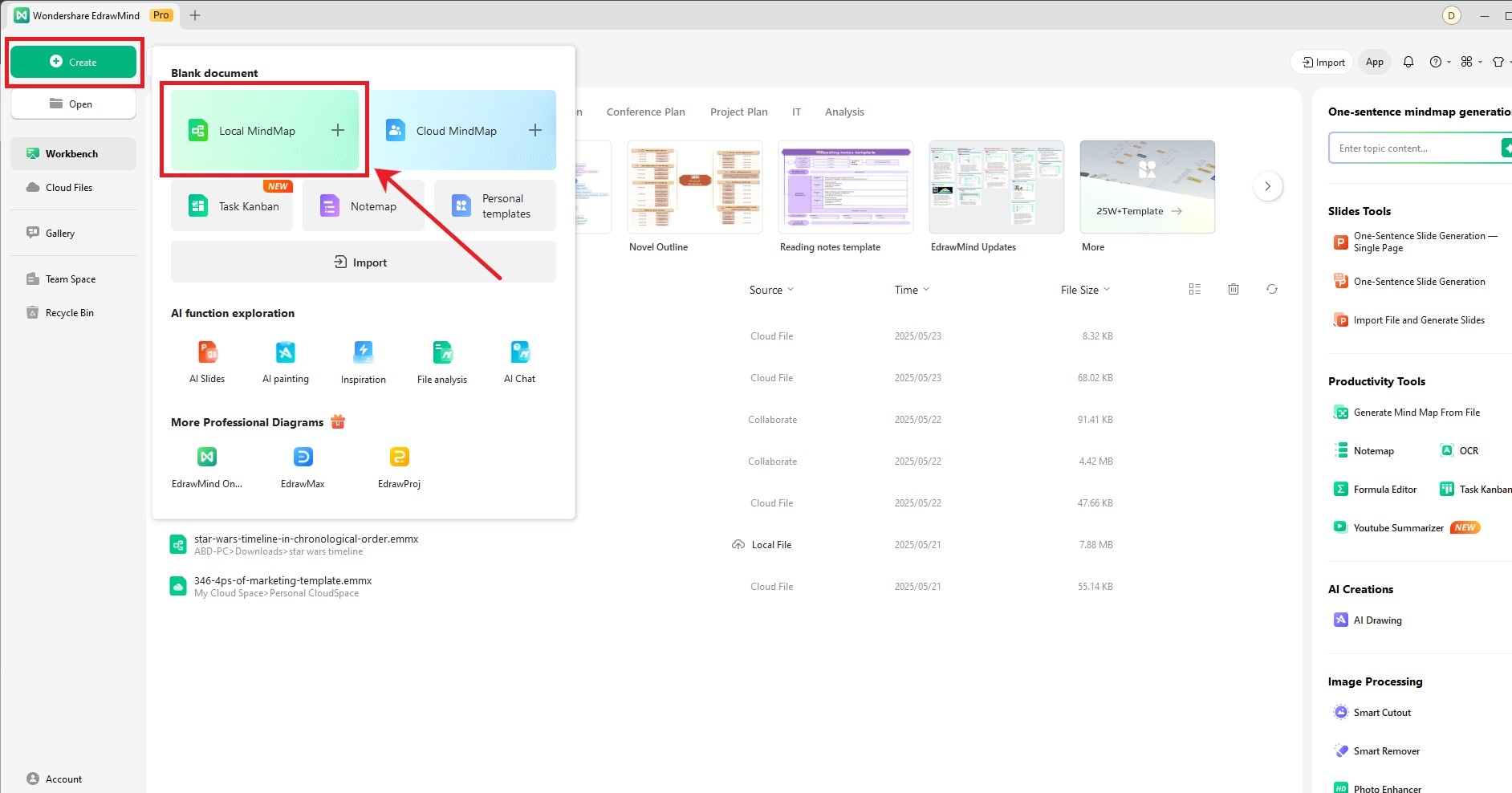
Step 2: Choose Timeline Style
- Click on Main Idea.
- A small menu will appear, choose Layout.
- Then pick Timeline (S-Shape) from the list of layout styles.
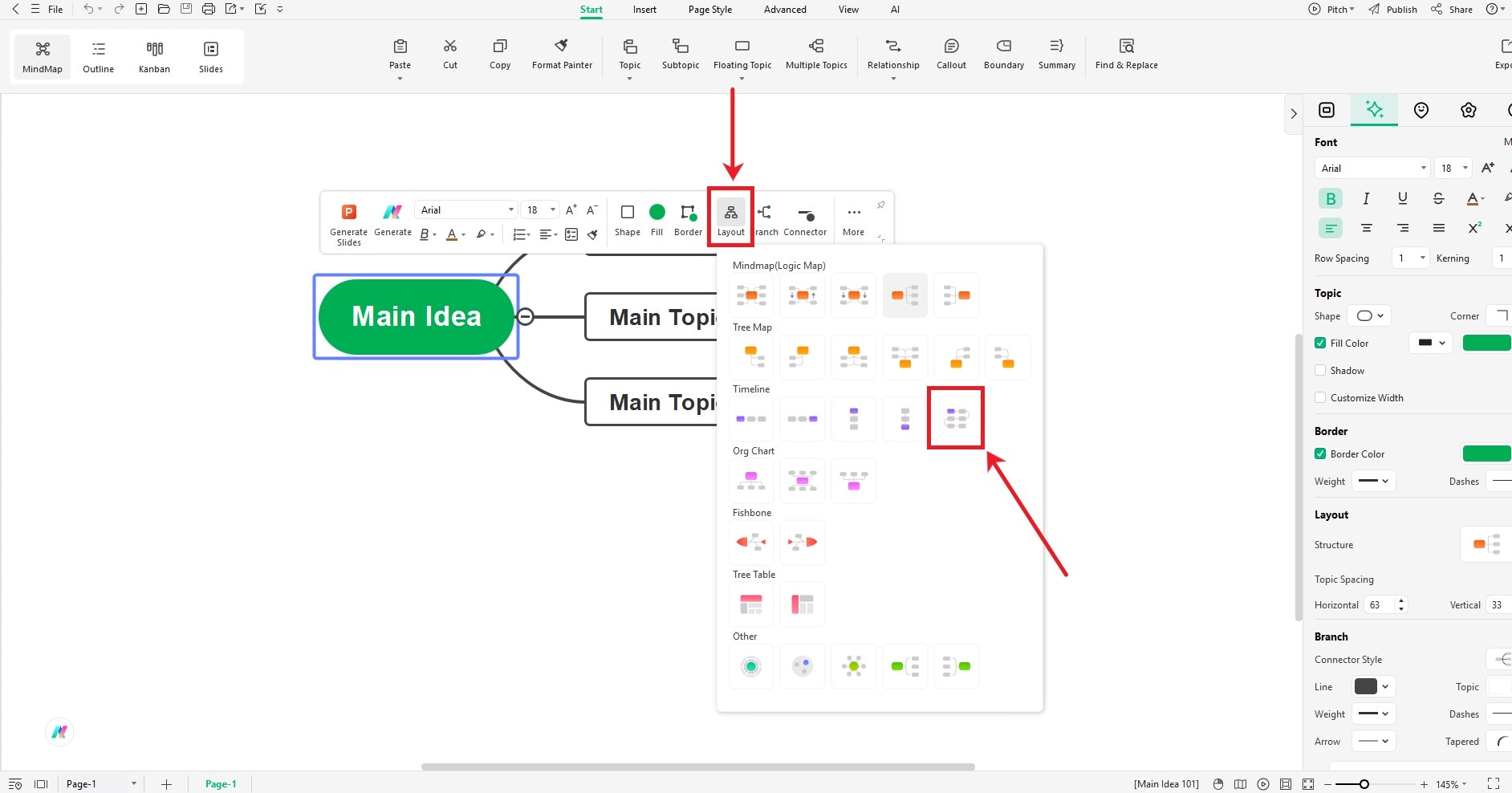
Step 3: Add Timeline Events
- Click the Main Idea and open the menu by selecting More.
- Choose Topic to add a new point.
- To add more details under each point, click Main Topic and select Subtopic.
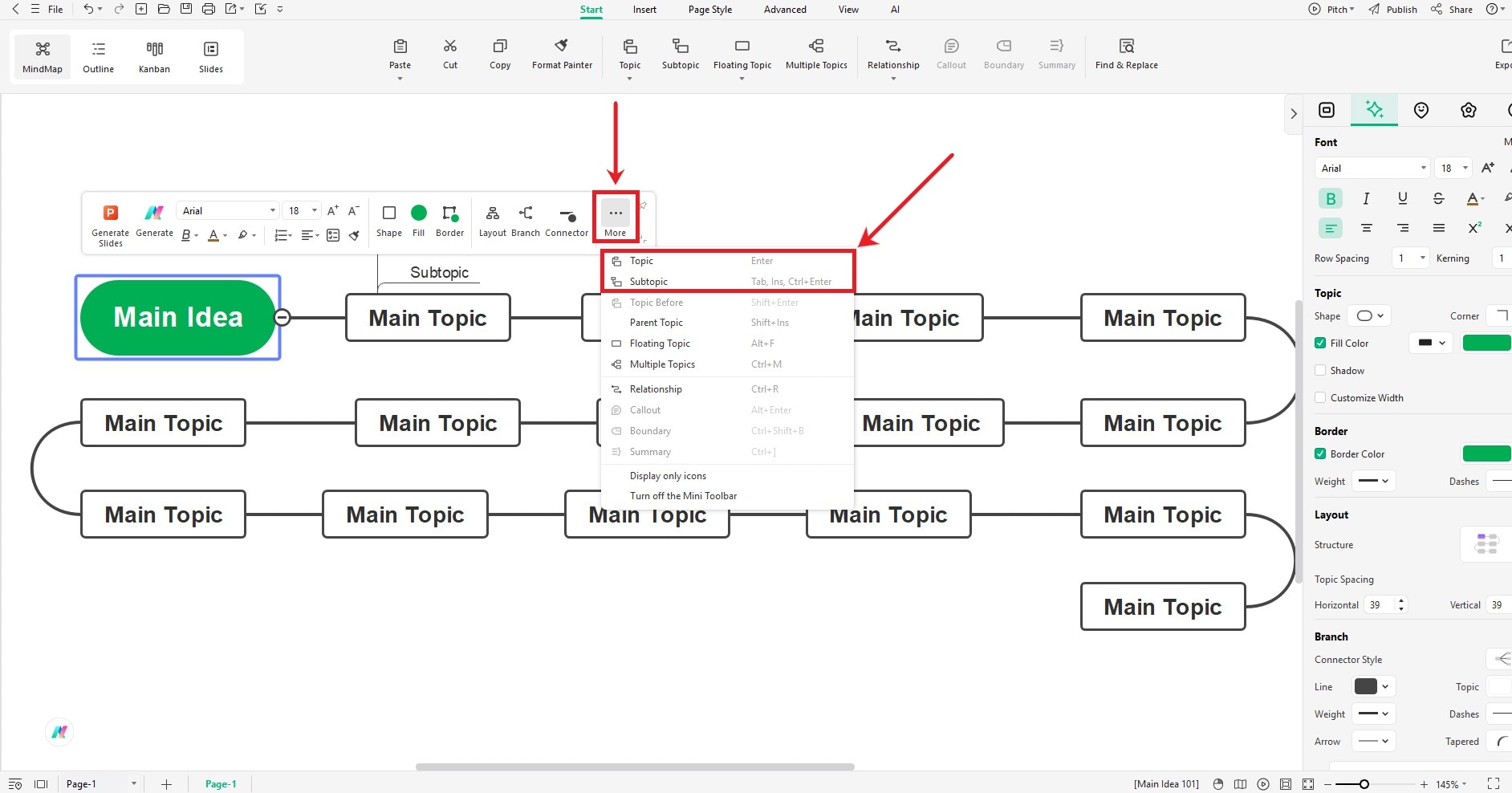
Step 4: Edit the Timeline Design
- Click on a part of the timeline or the whole thing. Use the floating menu and right-side panel to make it look how you want.
- To change the text, double-click on a topic and type your info.
- You can also change the font, color, and style from the floating menu.
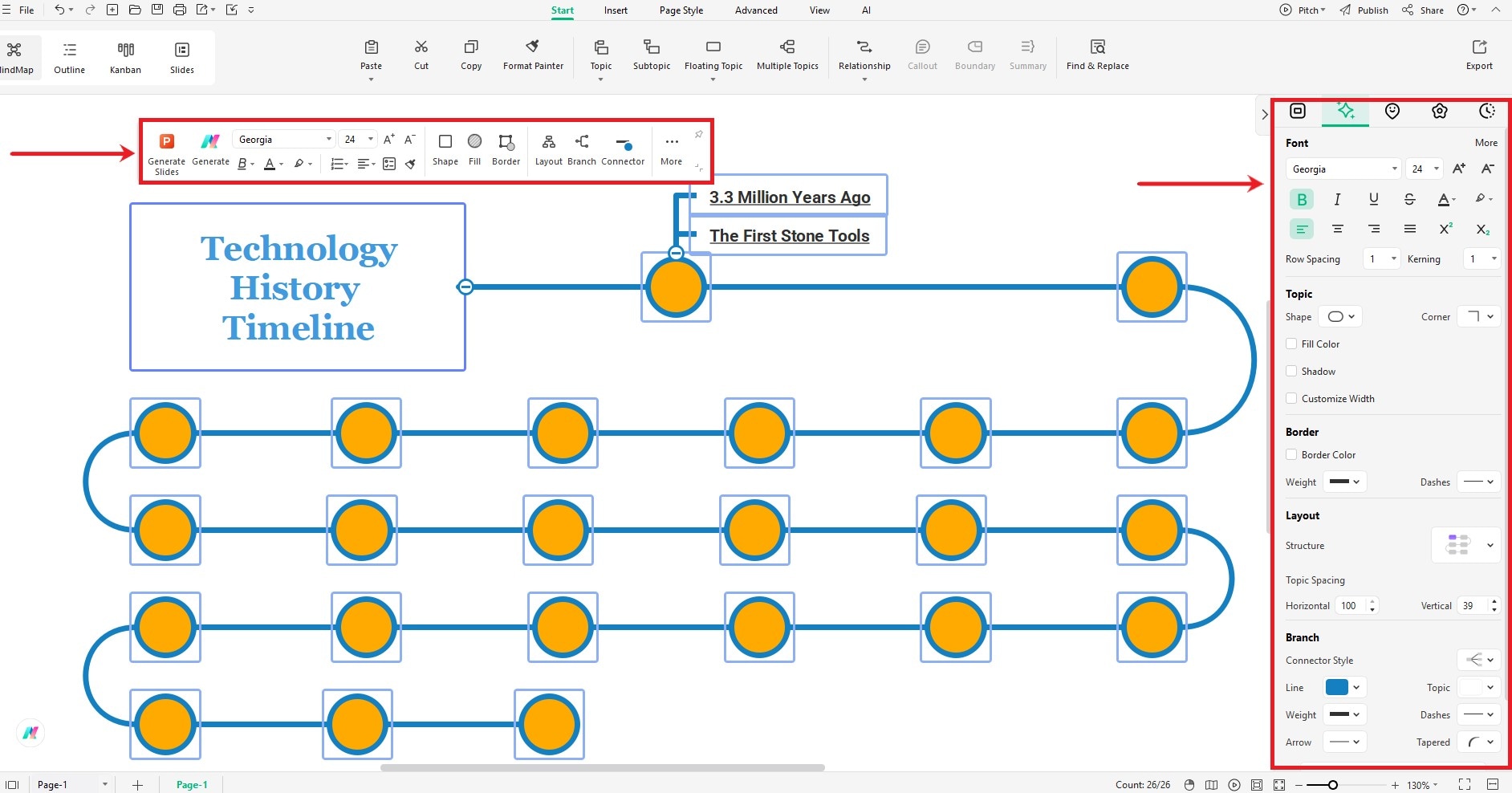
Step 5: Add Pictures to Events
- Download a picture and open it in EdrawMind.
- Use the menu or toolbar to adjust how it looks.
- Then drag the image into a topic to add it there.
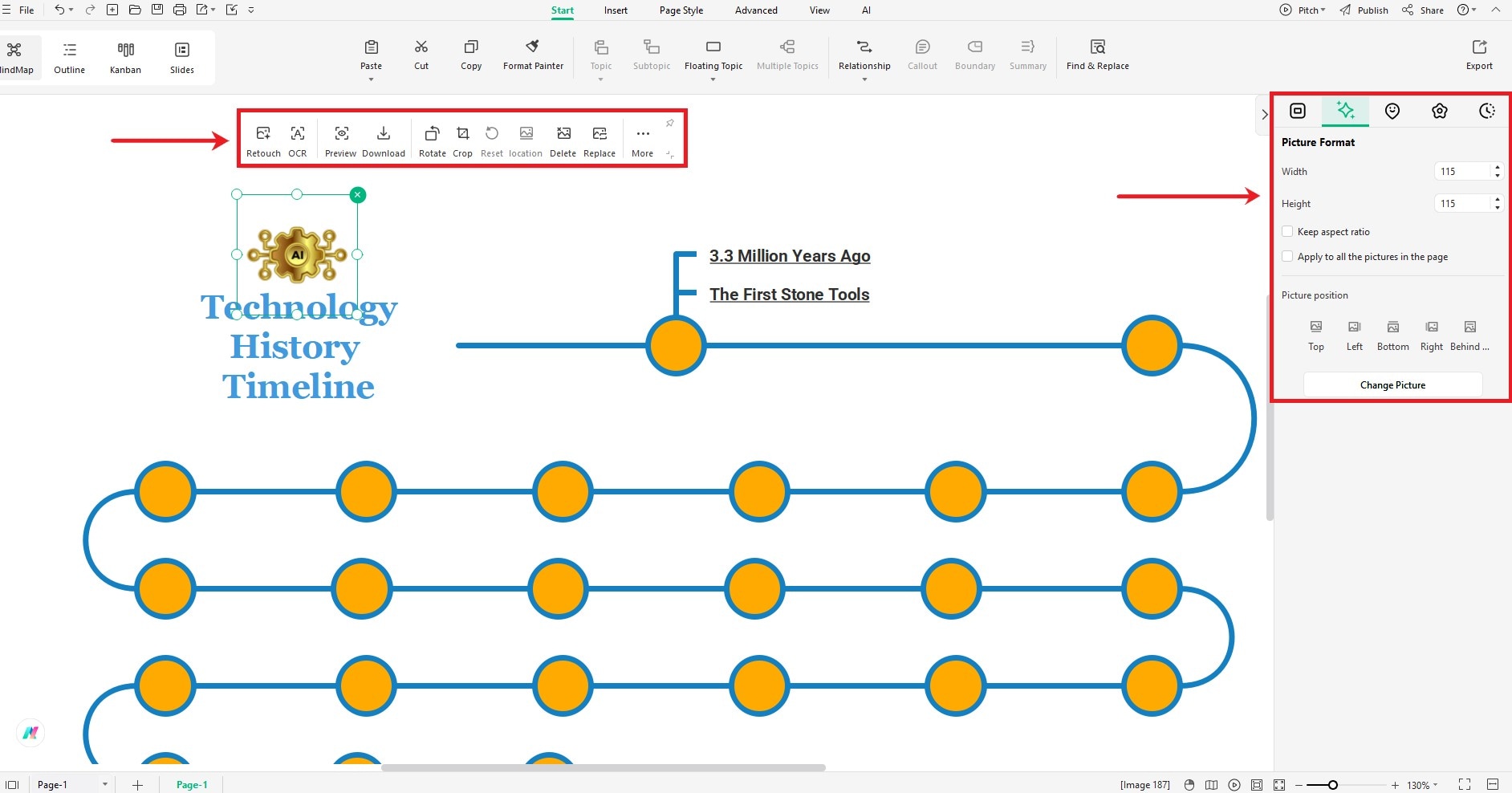
Step 6: Save or Export Your Work
- Once you're done, click the File button in the top-left corner.
- Click Save to keep your work in EdrawMind format.
- Or choose Export to turn it into a different file type.
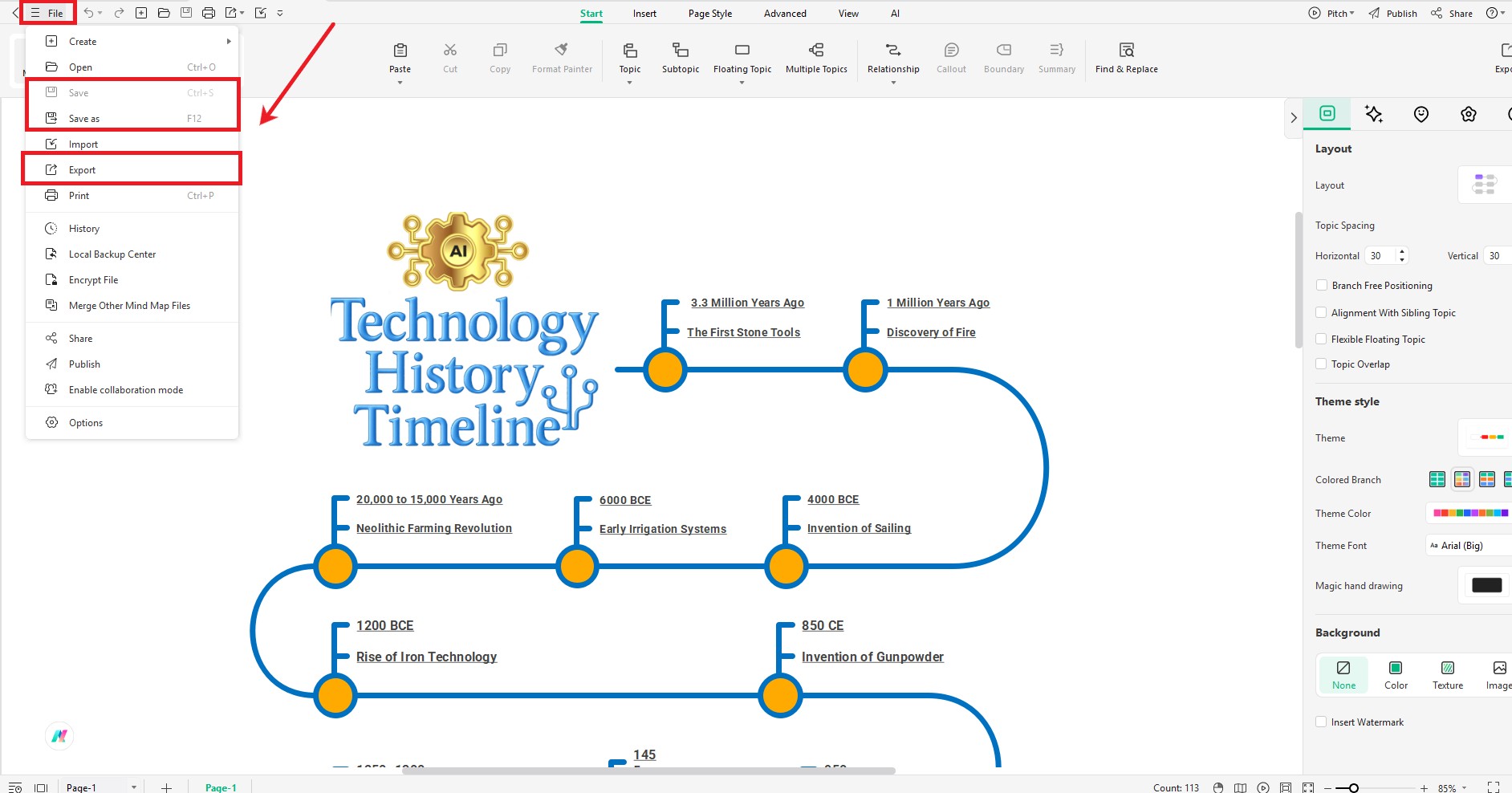
The Future of Technology
The next chapter of technology will be even more powerful. AI will think faster. Machines will become more helpful. We may even live alongside robots that understand us. But every invention starts with a question: "What if?" When we explore that question, we build the future, one idea at a time.
If you're ready to explore your own ideas and share them visually, EdrawMind is the perfect place to begin. It's easy to use and perfect for brainstorming your future.



